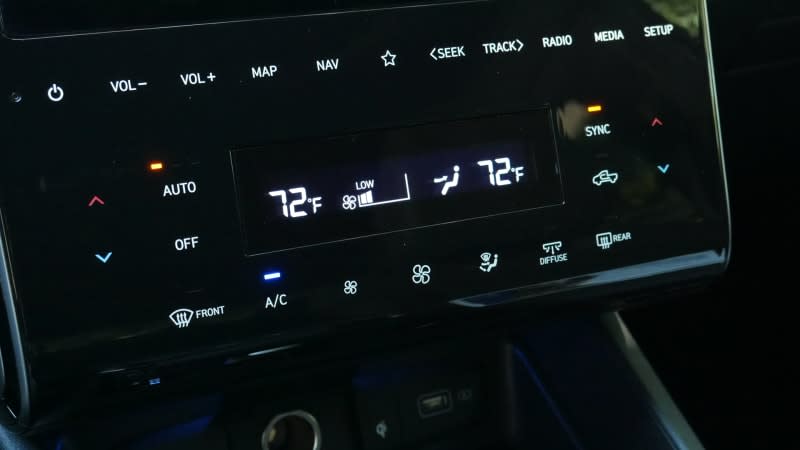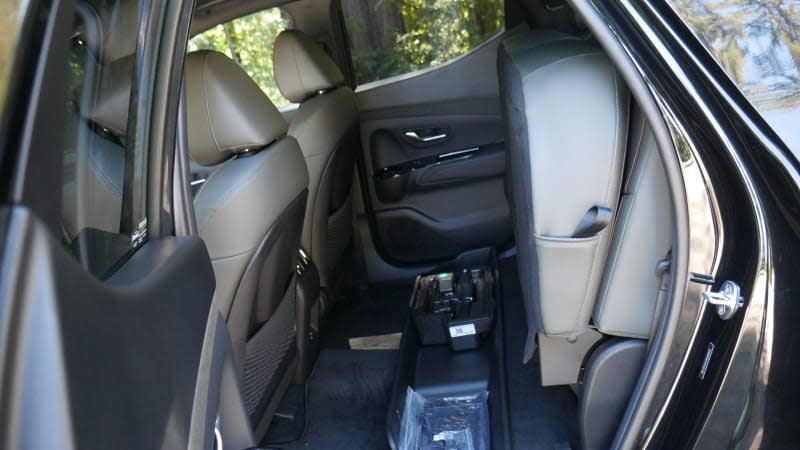2022 Hyundai Santa Cruz Review | More alt-SUV than mini truck

The 2022 Hyundai Santa Cruz is an entirely different type of vehicle. Not only is it a compact pickup, measuring far smaller than the Toyota Tacomas of the world, it's of a totally different construction. Rather than a truck's usual body-on-frame setup, it has a car-like unibody. In other words, it's a crossover pickup. That means it's lighter, more agile and more efficient in terms of both fuel consumption and interior space. It also makes it less robust for off-roading and towing (even if its ground clearance and 5,000-pound max are better than the average crossover), while its diminutive size can best be seen in its small 4.3-foot bed length.
Really, it's best to view the Santa Cruz as an alternative to compact crossover SUVs rather than midsize pickups. Its open bed, despite being small for a pickup, is still far longer than an SUV's cargo area and obviously offers infinite height. That could make it more useful for certain buyers. At the same time, its clever available cargo cover that rolls back like a garage door maintains the sort of security and all-weather protection provided by an SUV. This body style definitely has potential.
The Santa Cruz is already for sale, but demand has been very strong, so you may struggle to find one on a dealer lot (or at least one without a hefty dealer markup). Part of that comes down to global supply shortages, but the Santa Cruz is at least good enough to warrant the interest. Of course, it hasn't faced any apples-to-apples competition yet. Its segment will expand to two when the Ford Maverick arrives – it has a lower-quality interior and we doubt it will be as sporty and fun to drive as the Hyundai, but it also comes standard as a hybrid and is considerably cheaper.
Interior & Technology | Passenger & Cargo Space | Performance & Fuel Economy
What it's like to drive | Pricing & Features | Crash Ratings & Safety Features
What's new for 2022?
The Santa Cruz is an all-new model.

What are the Santa Cruz interior and in-car technology like?
The Santa Cruz interior has a more premium look and feel than average for a compact crossover, owing to the fact everything forward of the B-pillar is shared with the impressive new Hyundai Tucson. This gives the Santa Cruz a leg up on the Ford Maverick and justifies, at least to some extent, its higher price. In the Limited trim, the leather upholstery, extra-mile luxury features like ventilated seats and heated steering wheel, widescreen infotainment system and fancy-looking capacitive touch controls step things up even further.
As for the tech, Hyundai's infotainment systems, whether the standard 8-inch unit or the 10.25 widescreen one shown below, are some of the easiest to use on the market while being feature-packed and modern in appearance. We're less enamored with those capacitive controls. Though reasonably responsive, it takes too much concentration to find them with your finger amidst the glossy black expanse. Such controls have always had this problem, have always received backlash from owners and have always been replaced with conventional knobs and buttons with the next generation or sooner. We can't see the Santa Cruz being any different.




How big is the Santa Cruz?
The answer to this really depends on what you're comparing it to and which dimensions you're looking at. For a pickup, the Santa Cruz is very small at 195.7 inches in length. Even the smallest midsize truck, the Nissan Frontier, is 210.2 inches long in its smallest version and goes up to 224.1. Even the other unibody pickup, the Honda Ridgeline, is 210 inches in length. Total height differences are similarly out of whack, though the Santa Cruz’s width is actually similar to midsize trucks and its ground clearance of 8.6 inches is generous. At the same time, the Santa Cruz is hardly small. That length is more than a foot longer than the mechanically similar Hyundai Tucson, which is a pretty average compact crossover in size.
That size difference with crossovers is the result of the Santa Cruz's truck bed, which is substantially longer than the cargo areas of most SUVs regardless of segment. On the flip side, though, it's the shortest pickup bed currently on the market measuring 4.3 feet. What it may lack in overall capacity, however, it counters with plenty of clever features that aim to add versatility and security beyond the usual pickup experience. You can read our comprehensive Hyundai Santa Cruz pickup bed review here or watch our video about it below.
When we look inside, we flip things around again. The cabin can actually be more voluminous than the crew cabs of midsize pickups (especially the Toyota Tacoma), with a back seat that's at the very least more spacious and comfortable. Often it's better on both fronts. Then again, the back seat has considerably less legroom than compact crossovers and its backrest angle is a bit more upright. The space differences with the Tucson don't seem as vast as the spec sheet indicates (36.5 to 56.0 inches), but it's nevertheless significant.
What are the Santa Cruz fuel economy and performance specs?
The Santa Cruz SE and SEL come standard with a 2.5-liter four-cylinder that produces 191 horsepower and 181 pound-feet of torque, which is a typical amount for the base engine of a compact crossover. It is paired with an eight-speed automatic transmission and standard front-wheel drive, but all-wheel drive is available as an option. EPA-estimated fuel economy is 21 mpg city, 26 mpg highway and 23 mpg combined with FWD and 19/27/22 with AWD. Maximum towing capacity with this engine is 3,500 pounds with trailer brakes and 1,650 without.

 Yahoo Autos
Yahoo Autos 
